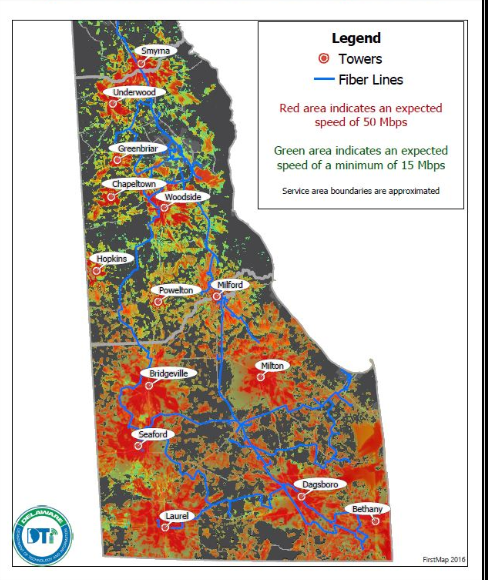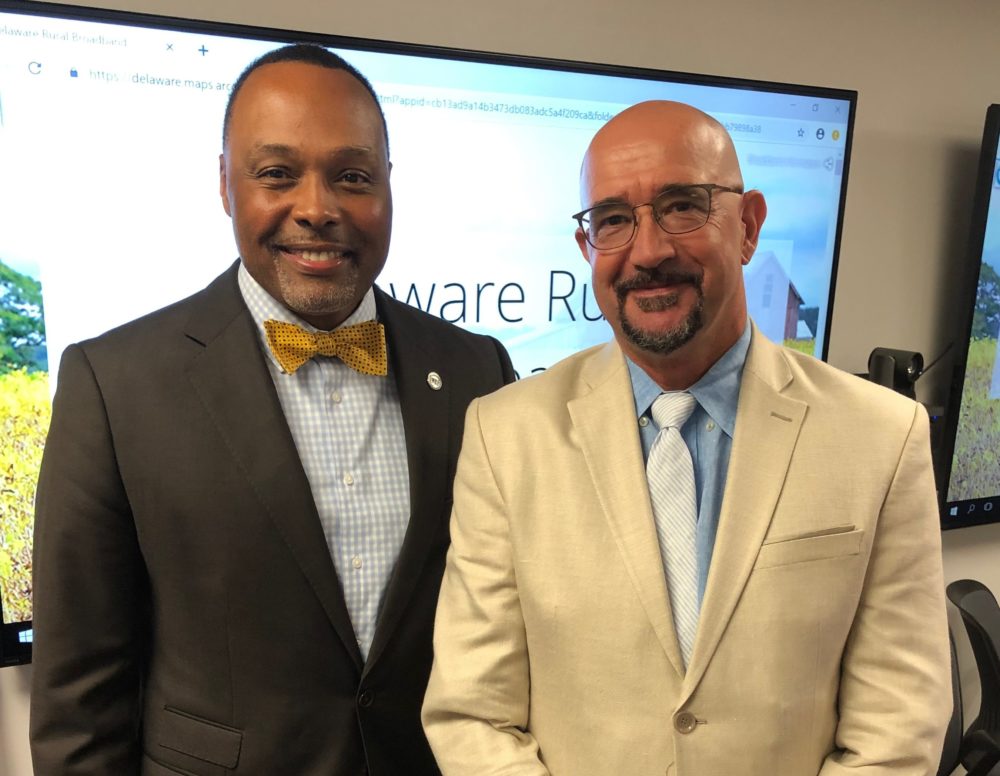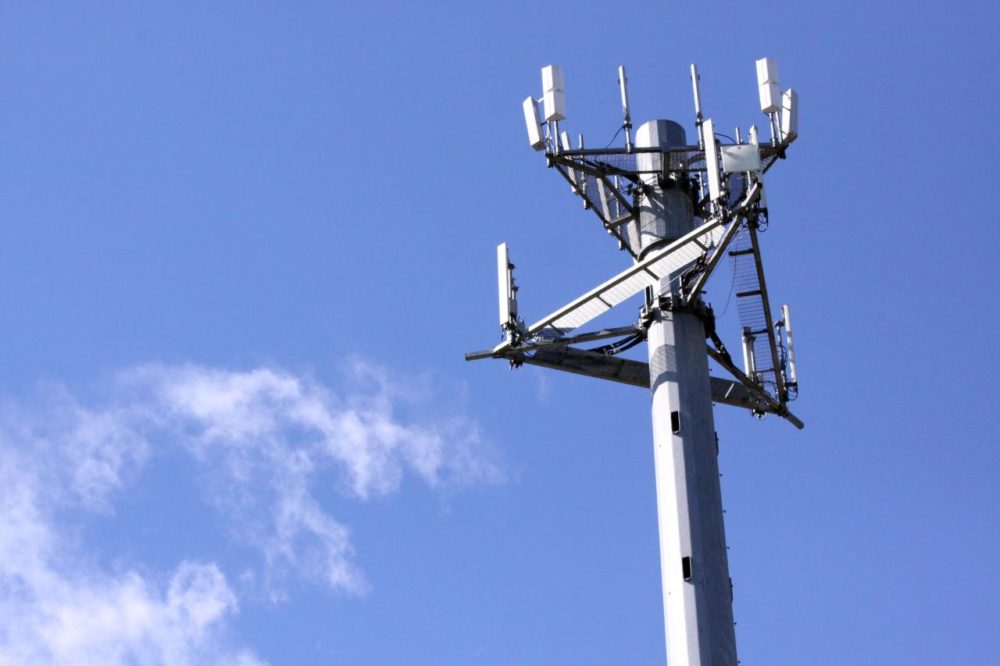Delaware’s southern counties of Kent and Sussex, like many rural areas of the country, have a broadband problem.
“You hear about people talking about ‘the last mile’ as it relates to fiber,” said James Collins, CIO of the Delaware Department of Technology and Information (DDTI), in an interview with Technical.ly. “In rural areas, it’s the last five, 10, 15, 25 miles. It’s just not cost effective to run fiber when there’s not a dense population.”
This week, DDTI signed a public-private partnership with the Maryland-based high-speed internet company Bloosurf to ensure that Kent and Sussex counties will be “broadband deserts” no more, with a plan to install wireless broadband throughout the area.
“We’re taking about $2 million, which is is offsetting their capital costs to deploy wireless broadband into less populated rural areas,” Collins said. “The state will essentially own the equipment that gets mounted on the towers. They’re using power infrastructure that’s already in the state, so that is going to expedite the deployment for a period of seven years, at which time, as long as Bloosurf offers their services in the underserved areas and offers low income plans, the equipment will become theirs.”
Some of the benefits of high-speed internet are obvious: It helps kids do homework, for instance, and increases access to telemedicine, distance learning and telecommuting. It’s quicker access to information in general.
In rural areas, it also means an improvement in agtech as we move closer to autonomous smart farms.
“Dependable broadband access and WiFi infrastructure is crucial to the technologies that are being designed into the newest farm equipment and processes,” said Joseph Poppiti, executive director of the Delaware Farm Bureau. “In row crops such as corn, soybeans and grains, technology can assist in planning with precision seeding, production with variable rates of chemical applications, marketing and crop storage monitoring, as examples.”

Other types of technology Delaware farmers will have increased access to with high-speed broadband include:
- Weather modeling
- Smart irrigation
- Frost detection
- Pest prevention and monitoring
- Poultry farm fertility planning, hatching, precision feeding and facilities monitoring (air temperature, humidity, lighting)
- Dairy farm robotic milking
As Rob Nicholson, innovative solutions integrator for DDTI, put it: “Artificial intelligence is coming to Delaware farms” — and with it, higher efficiency, higher yields and less waste.
Bloosurf will be leveraging spectrum licenses from the FCC, allowing it to offer speeds up to 1 GB, with 15 Mbps (fast enough to stream HD video on multiple devices) on the low end.
The bottom line, says Collins: “Broadband is the same level of importance as our other utilities.”








